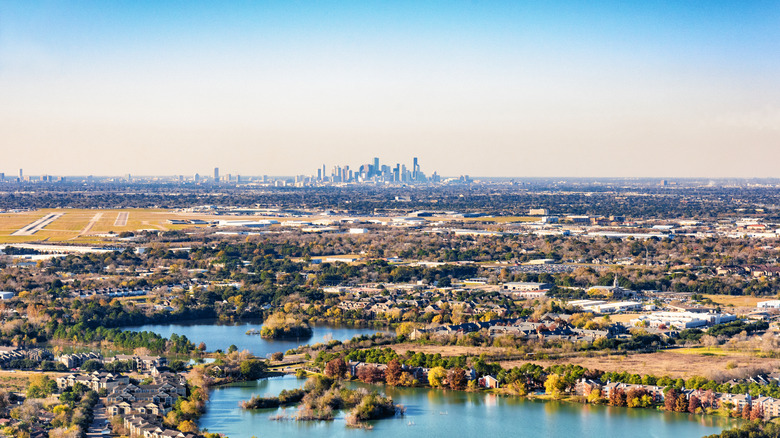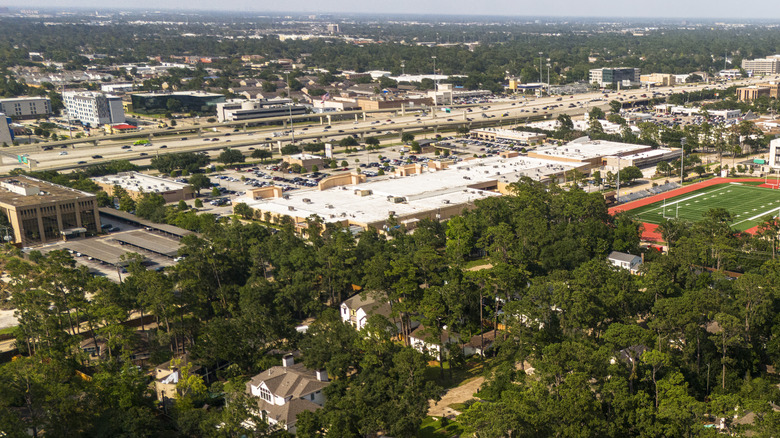This Texas Suburb Is America's 3rd Wealthiest In 2025
Economic gaps across U.S. communities have grown more visible in recent years. The U.S. Census Bureau's 2023 American Community Survey pegged the national median household income at $80,610. Yet in the same period, West University Place, Texas — a tight suburban pocket just outside of downtown Houston – demonstrated dramatically higher earning levels with a median household income of over $250,000. To put that in perspective, Texas's upper-class income threshold starts at $152,584 according to GoBankingRates. Even the state's wealthy look like they're scraping by next to West University Place households.
West University Place was ranked No. 3 on GOBankingRates' 2025 list of suburban areas with the highest household incomes, which compared communities with at least 5,000 households nationwide. Using Census Bureau data, it calculated the town's average income at $409,677 in 2023. Locals call it "West U," a roughly two-square-mile suburb with a little less than 15,000 people – but it packs in wealth like few places in America. By GOBankingRates' calculations, only Scarsdale, New York, and Rye, New York, rank higher in average household earnings.
The raw numbers pull the story into focus. U.S. Census Bureau data shows the median gross rent in West U was $3,000 in 2023, more than double the nationwide median of $1,406. With a poverty rate of around 2% and a median age of 41.3 years, the suburb attracts households with incomes that surpass the national upper-class threshold. In short, West University Place is one of Texas's most polished enclaves of concentrated wealth.
How West University Place built its elite income base
West University Place's wealth springs from something you might not expect at first glance: a ridiculously educated population. According to the U.S. Census Bureau's 2023 American Community Survey, 90.5% of people 25 and older hold a bachelor's degree or beyond. That's an extremely high share in Texas, and it's almost surreal when you consider that only 37.9% of Americans in that age group held bachelor's degrees or higher in 2021.
But education alone doesn't pay the bills, and the city's location adds another edge. With easy access to downtown Houston, the Galleria, and major employment centers, it offers a perfect setup for residents working in upper-class jobs. Being near Rice University also adds to the intellectual draw.
It also doesn't hurt that the Texas Medical Center is a few minutes from West U and employs over 120,000 people. This proximity brings in all kinds of highly compensated healthcare experts. Specialists like cardiologists, who have surprisingly large average incomes, often choose to live nearby — and can afford the housing. In 2023, Houston's medical and health services managers made $125,070 per year on average, according to the Bureau of Labor Statistics. With numbers like that, it's no surprise that households here regularly clear $250,000.
What makes West U so pricey?
West University Place's wealth brings both perks and a price tag. According to the City of West University Place, the municipal property tax rate was $0.24193 per $100 of assessed value in 2024. But that's only the start. Residents also pay into Harris County, the Houston Independent School District, and other local jurisdictions — pushing the effective total much higher. For West U homeowners, that means heavy annual bills. Still, those taxes fund local services and the regional systems that hold up the community's quality of life.
Day-to-day costs in West U carry the same weight of affluence. AreaVibes, using data from the Council for Community and Economic Research (C2ER) 2023 Cost of Living Index, lists the city's overall cost of living in 2025 at 127% higher than the national average. Housing prices are the real driver, sitting at an astonishing 426% above the national norm. Still, other expenses are more grounded. Groceries actually run slightly lower than the national average, as does healthcare. Transportation is around 9.6% cheaper than typical U.S. cities, and utilities hover just 3% above. The contrast shows it clearly: home prices, not daily essentials, create the steep wall around West University Place.


